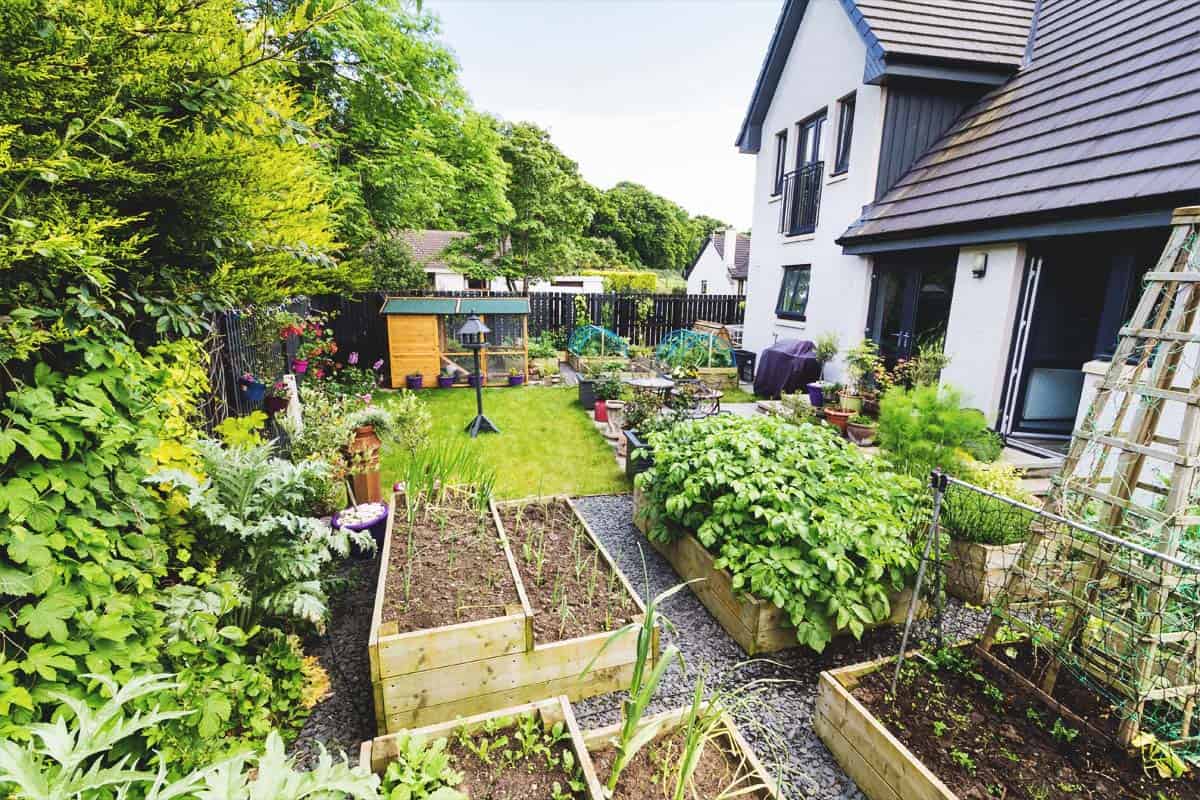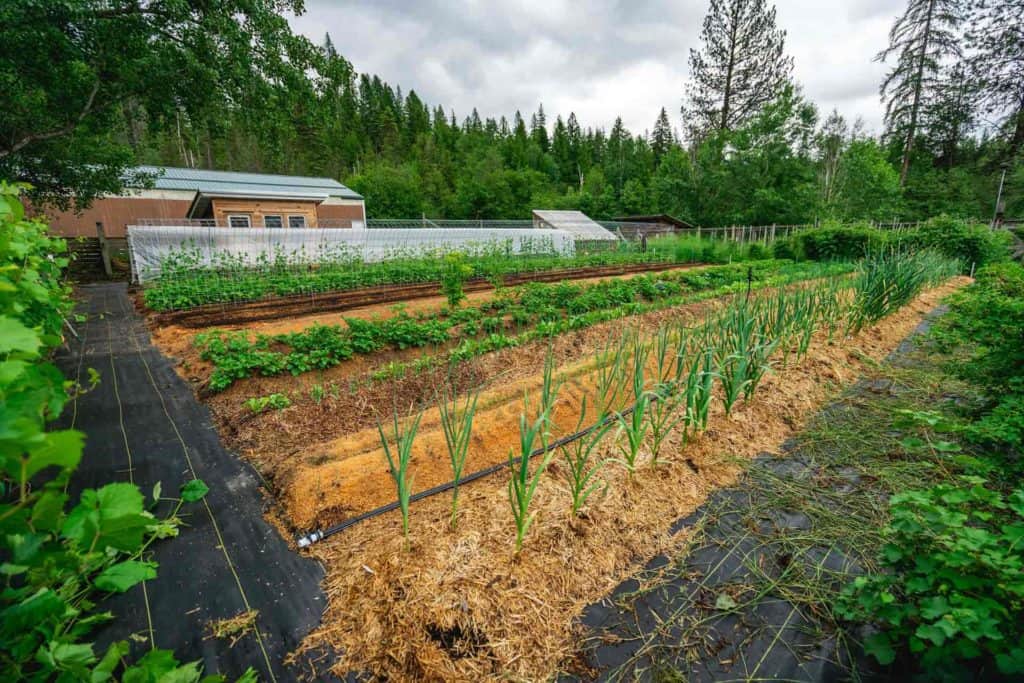What to Cultivate in Your Homestead Gardening Setup
What to Cultivate in Your Homestead Gardening Setup
Blog Article
Discover the Secrets to Producing a Attractive and Efficient Gardening Room
Developing a attractive and efficient horticulture area is not just an issue of growing blossoms and vegetables; it requires a calculated method that incorporates numerous critical components. From choosing the right area based on sunshine and dirt type to thoughtfully developing your layout and choosing suitable plants, each decision plays a critical role in the success of your garden.
Picking the Right Place
Selecting the ideal area for your garden is crucial to its success and overall visual charm. The initial step in this process involves assessing sunshine exposure, as a lot of plants require at the very least six hours of straight sunshine daily (Homestead Gardening). A south-facing garden generally obtains the most light, while shaded locations can hamper growth and blooming
Additionally, take into consideration soil quality and drain. Well-draining soil is crucial to protect against waterlogged origins, which can lead to plant illness. Conducting a soil examination can offer important information pertaining to pH levels and vitamins and mineral material, enabling you to change the dirt accordingly.
In addition, distance to water resources is one more aspect to evaluate - Homestead Gardening. Having easy access to a pipe or watering system can streamline the watering process and motivate regular plant treatment. Wind defense is likewise crucial; placing your garden near frameworks, such as fencings or wall surfaces, can shield it from rough winds that may damage fragile plants
Last but not least, take into consideration access for upkeep and harvesting. A well-placed yard permits practical access, making certain that you can quickly often tend to your plants without triggering excessive stress or disturbance. Thoughtful location selection lays the foundation for a prospering garden.
Picking Plants Wisely
When choosing plants for your garden, it's important to take into consideration factors such as climate, soil conditions, and personal preferences to guarantee a harmonious and efficient room. A comprehensive understanding of your regional environment will certainly direct you in choosing plants that flourish in your particular atmosphere. As an example, picking drought-resistant selections is valuable in deserts, while moisture-loving varieties might be a lot more proper for locations with high rains.
Dirt conditions are just as vital; conducting a dirt examination can expose pH levels and vitamins and mineral web content, permitting you to pick plants that will certainly thrive. Indigenous plants are usually an outstanding selection, as they are commonly well-adapted to regional soil types and call for less upkeep.
Mirror on your personal choices-- picking plants that resonate with your visual tastes will improve your satisfaction and commitment to keeping your yard. By thoroughly evaluating these aspects, you can create a varied and thriving plant selection that elevates your gardening experience.
Creating Your Garden Layout
With a thoughtfully selected plant option in hand, the next step is to produce a yard format that optimizes both beauty and functionality. Begin by evaluating the available room, taking into consideration variables such as shade, wind, imp source and sunlight patterns. A tactical format should incorporate numerous areas, consisting of areas for planting, paths, and perhaps seating.
Beginning with bigger plants or focal factors, such as trees or high perennials, placed tactically to produce visual passion. Layer smaller sized plants ahead to improve depth and texture. Think about the growth routines of your selected plants; taller ranges must be placed at the back or center of beds, while much shorter ones can line the edges.
Incorporating pathways not just promotes gain access to for upkeep yet additionally invites exploration. Use materials that match the garden's overall aesthetic, whether timber, crushed rock, or stone chips.
Furthermore, believe about seasonal modifications and exactly how your design will look throughout the year. Including evergreens together with seasonal blossoms can make sure year-round charm. Ultimately, a properly designed yard design harmonizes the all-natural charm of plants with useful considerations, causing an area that is both welcoming and productive.
Enhancing Soil Health

To boost soil health, begin by carrying out a dirt examination to examine pH levels, nutrition content, and dirt structure. This will certainly inform your changes. Include raw material such as garden compost, well-rotted manure, or fallen leave mold to improve dirt framework, water retention, and microbial activity. Furthermore, practicing plant rotation can stop vitamins and mineral depletion and lower bug and disease pressures.
Mulching is an additional efficient approach; it not just conserves moisture however additionally subdues weeds and progressively enhances the dirt as it damages down. Staying clear of too much husbandry is essential, as it can interfere with dirt framework and damage useful microorganisms. this link Rather, embrace no-till or marginal husbandry methods to preserve soil integrity.

Preserving Your Garden Efficiently
A well-kept garden gives pride and efficiency, requiring consistent attention to ensure that plants thrive and the landscape remains inviting. Reliable yard upkeep entails numerous vital techniques that improve the health and wellness of your plants and the total visual of your area.
Routine watering is vital; nevertheless, it is necessary to customize your watering timetable based on the particular requirements of your plants and neighborhood climate conditions. Mulching can aid preserve moisture, suppress weeds, and manage soil temperature. Moreover, timely weeding stops competition for nutrients and sources, making certain that your plants prosper.
Trimming is one more necessary job. It encourages healthy and balanced growth, gets rid of infected or dead branches, and shapes plants to keep an attractive structure. Additionally, keeping track of for diseases and pests is vital; early discovery and intervention can save your plants from substantial damage.
Fertilizing ought to be executed attentively, using organic options whenever possible to promote long-lasting soil health. Ultimately, seasonal tasks such as planting, dividing perennials, and planning for winter months will ensure your garden remains lively year-round. By complying with these techniques diligently, you can grow a yard that is both productive and stunning.
Verdict
Picking an ideal area with appropriate sunlight, picking ideal plants, creating a visually pleasing design, boosting soil health and wellness, and making sure regular maintenance are vital elements. By integrating these techniques, one can cultivate a flourishing garden that not just improves the landscape but additionally advertises environmental balance and sustainability.
From picking the right place based on sunshine and dirt type to attentively creating your layout and picking appropriate plants, each decision plays a crucial function in the success of your yard. Well-draining dirt is necessary to avoid water logged origins, which can Homepage lead to plant illness.When choosing plants for your yard, it's vital to consider elements such as climate, dirt problems, and personal choices to ensure a effective and harmonious room. Ultimately, a properly designed garden design harmonizes the natural elegance of plants with functional considerations, resulting in an area that is both welcoming and productive.

Report this page